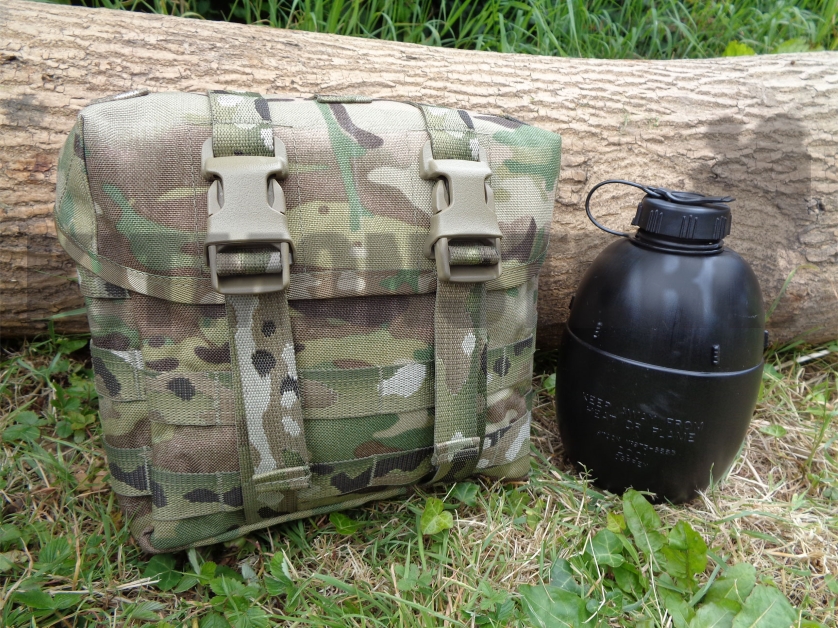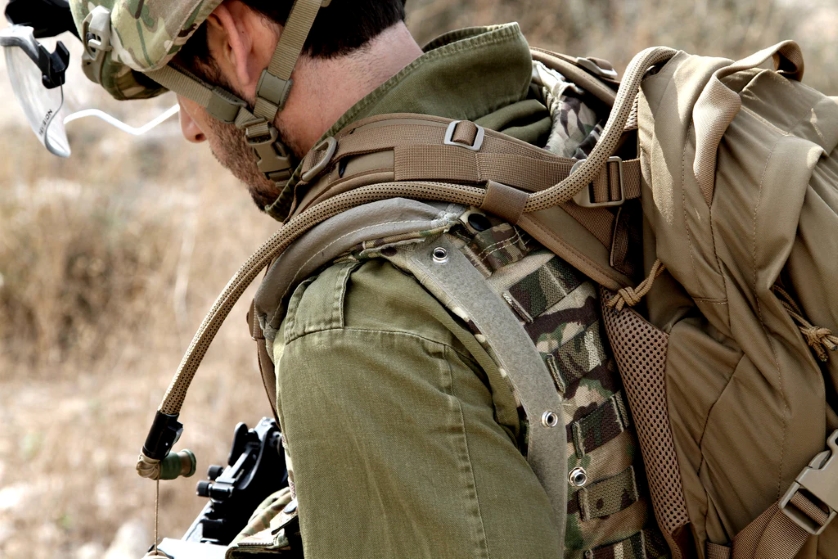Whether in the army, military, law enforcement or firefighting, when on the field for a specific mission or tactical training, you must carry the right gear to survive. The MOLLE system allows you to organise your equipment at the reach of your hand. What is MOLLE, and how can its different pouches and attachments help you manage your gear efficiently?
What Is MOLLE?
MOLLE, an acronym for “modular load-caring equipment,” is pronounced “mol-lee, homophonic to Molly. It’s a fastening mechanism or attachment system enabling you to secure the various pouches and modules to your tactical belts, rucksacks, plate carriers, and backpacks. Simply put, MOLLE is a gear system consisting of rows and columns of webbing that you may layer to customise your equipment for different uses. With this approach, you can fully tailor your tactical gear to fit your goal.
What Are the Different Types of MOLLE Pouches?
MOLLE pouches are modular storage solutions that you’re supposed to fasten to the MOLLE base webbing. There are many pouch types, such as magazine, medical, hydration and versatile utility pouch options. These sturdy, lightweight bags are excellent for holding various items, such as digital device cases and first aid kits, giving you quick access to anything you need when you need it.
Because they’re adaptable, users can tailor their loadout to suit their goals and needs. Although each kind of pouch serves a certain role, they make for a well-thought-out and beneficial gear configuration when combined. Let’s examine a few of the more prevalent ones.
Magazine
Magazine pouches are a vital piece of tactical gear. They’re made to hold a variety of ammunition magazines, from smaller 9mm pistol magazines to bigger rifle magazines like those for AK-47s or AR-15s.
These pouches are available in numerous sizes, from single magazine pouches designed to hold one magazine to quad options capable of holding up to four magazines in a row, providing increased ammunition capacity with a larger profile. Open-top and flap-top designs are the two most common styles, frequently having an elastic retention system or a Velcro flap for safe storage that permits quick retrieval.
Utility

Utility pouches are the Swiss Army knives in the world of tactical gear. They’re versatile and essential for making various items easily accessible, from extra rounds and little tools to personal belongings. Consider them your go-to pocket for items necessary for your mission but don’t fit anywhere else.
There are various MOLLE utility pouch sizes, from micro to large and expandable options. Small pouches are ideal for carrying small items like flashlights, multitools, batteries, and small first aid kits while large ones are suitable for storing your binoculars and bulkier tools. If you need something in between for carrying maps, gloves, notepads and medium-sized gear, medium-sized utility pouches might be the best option. There are also options designed to expand to accommodate more items or collapse to save space when not fully loaded.
While some have a simpler design, with only one huge compartment for larger items, others have internal dividers, pockets, mesh compartments and elastic loops to help organise and secure your gear inside the pouch. When looking for the right utility pouch for your gear, opt for durable materials such as 500D and 1000D nylon to provide abrasion, tearing and water resistance. If you’re working in wet conditions, look for options with drainage grommets, or holes, to allow water to escape, keeping the content dry.
Medical
Being on the field comes with many risks and hazards with the major one of losing your life if you don’t carry the right first aid kit on you. Thus, packing the appropriate items with your combat gear is vital.
Of all the medical pouches, the Individual First Aid Kit, or IFAK, deserves a special mention and should be carried by every army reservist and practical shooter. There are single- and multiple-cell medic options and a tourniquet cover (TQ). You can choose the supplies based on your financial situation and level of first aid knowledge. You can store in an IFAK pouch everything you require in an emergency, including bandages, tourniquets, antiseptics, and trauma shears.
These can save lives by making medical supplies easily accessible, even with their small sizes, as their designs frequently permit easy, one-handed access, ensuring that receiving medical help is never delayed. Rather than treating others with your IFAK, the basic idea is to treat the wounded with their own. Because of this, it is imperative that each unit member has the same first aid supplies and that they’re all labelled identically.
Hydration

It’s important to stay hydrated, particularly under demanding situations. This demand is met by hydration pouches, which make it comfortable for you to carry different-sized water bottles on your back. The purpose of these is to store water reservoirs safely. They include hydration tube openings to easily reach them without removing your pack. That allows you to drink while moving and free up your hands for other activities. Not only are hydration pouches beneficial, but they’re also essential for preserving health and performance during extended activity.










